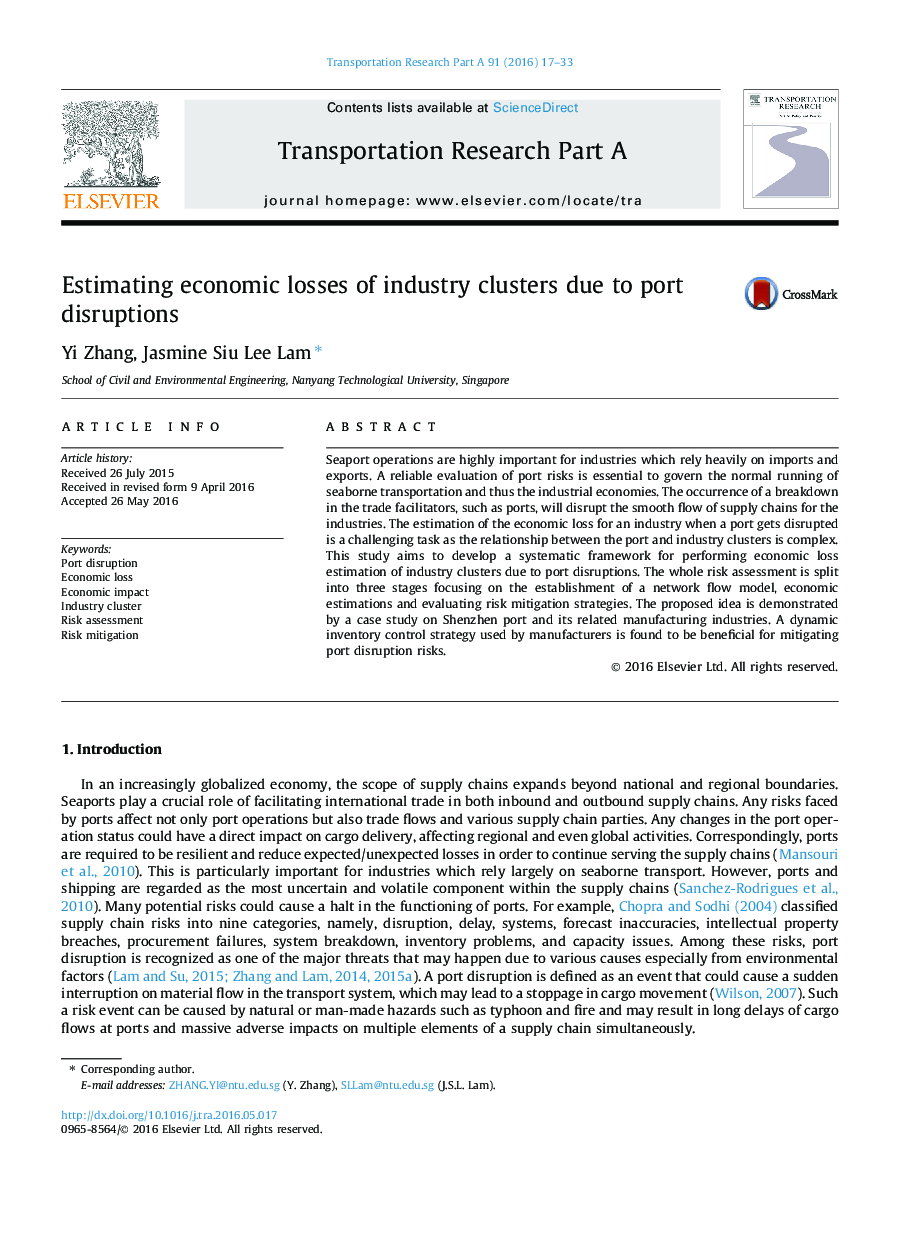| کد مقاله | کد نشریه | سال انتشار | مقاله انگلیسی | نسخه تمام متن |
|---|---|---|---|---|
| 310365 | 533081 | 2016 | 17 صفحه PDF | دانلود رایگان |
• A systematic framework for performing economic loss estimation of industry clusters due to port disruptions.
• Petri Net models the relationship between the port and industries.
• Shenzhen port and HP printer are used in the case study.
• A dynamic inventory control strategy is beneficial for risk mitigation.
Seaport operations are highly important for industries which rely heavily on imports and exports. A reliable evaluation of port risks is essential to govern the normal running of seaborne transportation and thus the industrial economies. The occurrence of a breakdown in the trade facilitators, such as ports, will disrupt the smooth flow of supply chains for the industries. The estimation of the economic loss for an industry when a port gets disrupted is a challenging task as the relationship between the port and industry clusters is complex. This study aims to develop a systematic framework for performing economic loss estimation of industry clusters due to port disruptions. The whole risk assessment is split into three stages focusing on the establishment of a network flow model, economic estimations and evaluating risk mitigation strategies. The proposed idea is demonstrated by a case study on Shenzhen port and its related manufacturing industries. A dynamic inventory control strategy used by manufacturers is found to be beneficial for mitigating port disruption risks.
Journal: Transportation Research Part A: Policy and Practice - Volume 91, September 2016, Pages 17–33
